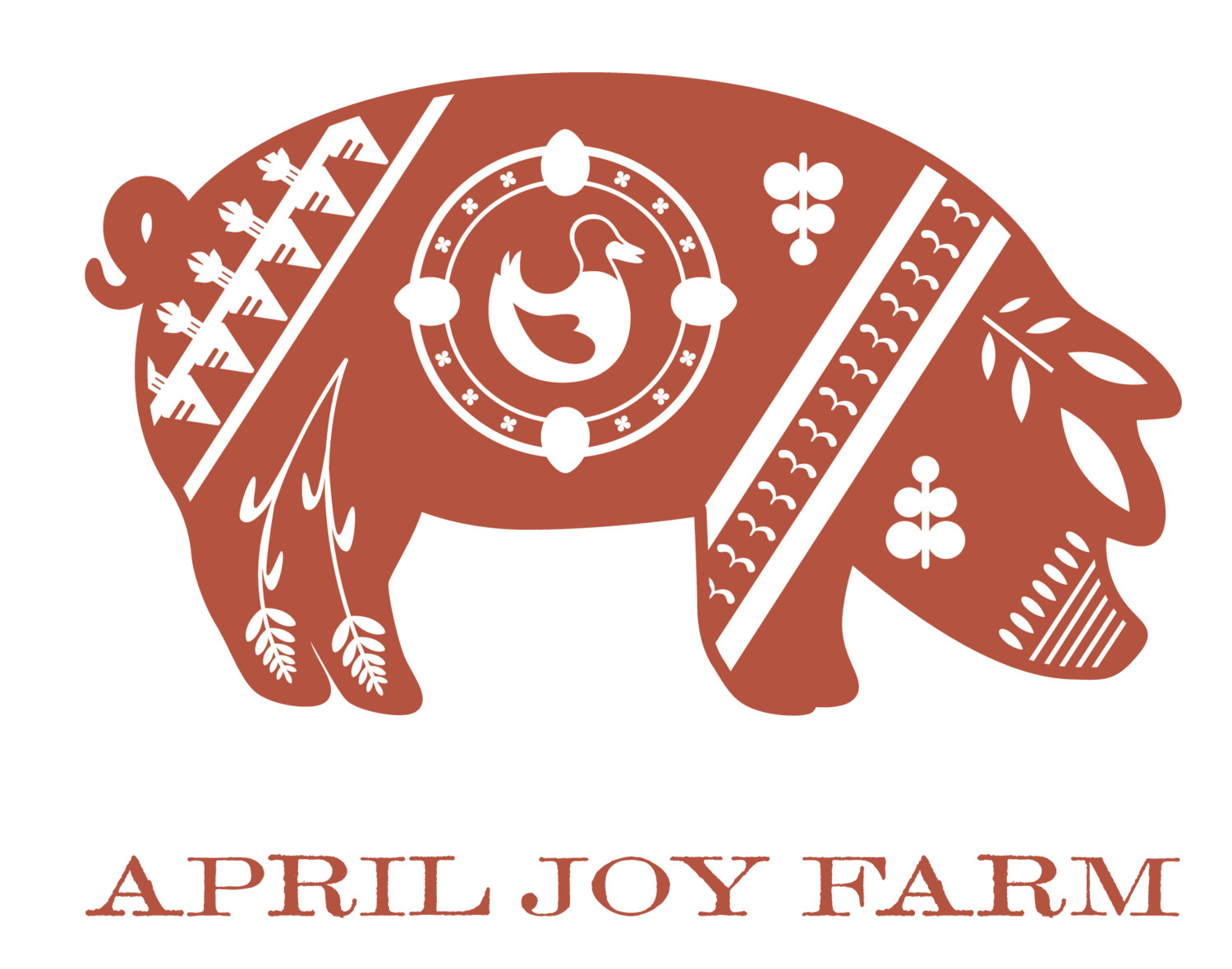How Big Is April Joy Farm | Part I
By far the most common question I’m asked is, “How big is your farm?” Well, as I’m liable to respond to many agricultural questions—it depends. What I mean by that is it depends on one’s definition of a farm.
Our annual produce fields all told are a little under 2 ½ acres. Our hay field is almost 6 acres. We also have several orchards and a small vineyard which are about 3 non-contiguous acres spread out in pockets that ring the cultivated fields. Then there is acreage devoted to infrastructure: barns, small fenced pastures, the packing shed, the seeding house, the farmhouse and several other covered growing structures. Now, all these spaces I’ve just listed might align with your definition of a farm. But for me, the physical farm boundary is even bigger still.
If we were to stand anywhere in the produce fields, you could look in any direction and see various forms of what I consider to be some of the most crucially important acreage of our farm. No, not right at your feet, but out beyond the ends of the produce rows! Hedgerows of mock orange, Nootka rose and red-osier dogwood line the south driveway. A tall stand of Douglas-fir and western red cedar flank the big barn to the east and at their feet is a line of Indian plum and ninebark. Ten years ago now, along the northern boundary, I planted over 900 native plants, including western hemlock, tall Oregon grape, Douglas spirea, red currant, snowberry and oceanspray. A forested area with a creek that daylights at the heart of our property curls west and south, forming a steep ravine of blackberry, big leaf maple, alder, hawthorn, cascara, wild cherry and did I mention the blackberries?
Now big, non-edible shrubs, invasive blackberries and evergreen trees may not sound like farmland to you. However, ‘wild’ spaces such as these provide essential habitat for beneficial insects which both pollinate our crops and keep vegetable pest populations in check. Such places provide homes to bee hives, bats that eat mosquitoes, and riparian areas which shelter tree frogs, small salamanders, and a whole host of symbiotic plant and animal communities. Great blue herons, attracted to the beaver ponds, stick around to hunt vegetable eating voles and mice in our produce fields. The herons are frequently joined by kestrels which have come to our farm every year to brood and hatch their young in a bird box I built in 2007 and mounted high on the little ridge near the forest edge. These friends of the farm hunt our fields seemingly continuously to feed their chittering young. Subsequently, we have never experienced a vole problem in our crop fields.
Kestrels are territorial but do not eat fruit. In unbelievably acrobatic displays, we’ve witnessed them discourage packs of starlings from gluttonous bouts of eating juicy fruit. This means we haven’t yet needed to purchase expensive plastic netting to protect our ripening grapes. More astounding is this: last year, over a period of weeks, Brad and I watched our kestrel friends chase off several persistent hawks and crows who were hoping to make a lunch of our newly hatched poultry. Kestrels have a protein rich diet which includes bats and small songbirds—and quite reasonably that would extend to include baby chickens. Amazingly, it feels like a sort of joyful reciprocity—we keep providing the kestrels a protected, food-rich habitat where they can safely allow their young to learn to fly and to hunt. In exchange, it seems they’ve “adopted” our young poultry as part of the family and risked their life fighting predators easily twice their size to protect our smallest chicks.
A ladybug rests on Showy milkweed, Asclepias speciosa at April Joy Farm. According to The Xerces Society, "showy milkweed is the only native host plant for monarch butterflies west of the Cascade Mountains." Learn more at Project Milkweed.
Quite often, I’m asked by earnest organic gardeners, “How do you keep the [insert pest name here] off of your [insert crop name here].” I always try to provide helpful information about the life cycles of pests, the importance of regionally adapted varieties, transplant timing, and physical barriers, before I offer a few palliative care type suggestions. But what I really want to say is this: Look down and look out! Healthy soil and a healthy, diverse ecosystem are so crucial to success. Otherwise you'll always be stuck on a treadmill of treating symptoms.
It’s important to note that my farm wasn’t picture perfect when I arrived. But every single year, I’ve made it my mission to restore, protect, or otherwise nurture at least one ‘unfarmed’ pocket of my land. Nobody counseled me to do this, and it could have been oh-so-easy to justify spending all my time in the crop fields. But I have a strong conviction that agricultural stewardship entails all the land under my care, not simply the soil in which crops grow. We are all connected; I can’t imagine trying to work without the support and inspiration of a natural ecosystem. Thus, the uncultivated, ‘wild’ acreage at April Joy Farm will always be crucial to growing great food with love.
As my sister Anna says, “Give nature space; she is an amazing partner.” ~AJ
“I’d rather rely on Mother Nature’s wisdom than man’s cleverness.”


